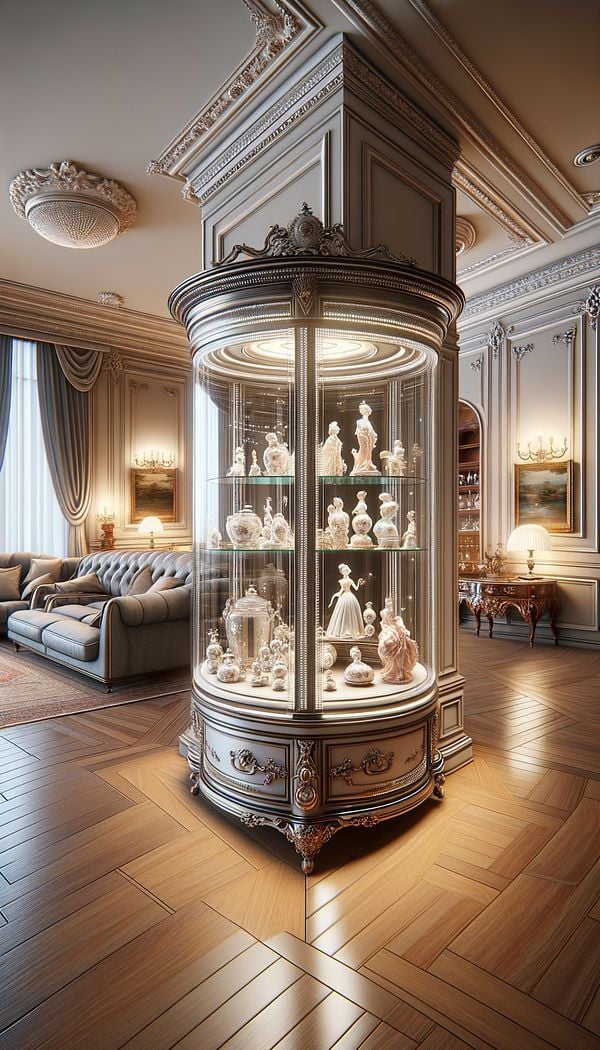What is a Vitrine?
A vitrine is a glass display cabinet designed to showcase and protect objects or collections.
Description
A vitrine is more than just a simple glass cabinet; it’s a carefully designed piece of furniture intended to display objects of interest, art, or collectibles while protecting them from dust, damage, and sometimes, theft. This type of furniture typically consists of a wood or metal frame with glass panels on all sides, sometimes including the top, allowing for a clear view of the displayed items from various angles. The transparency of a vitrine not only serves the practical purpose of protection but also elevates the displayed items to a focal point in a room, highlighting their beauty and uniqueness.
Vitrines come in various sizes, ranging from small tabletop models to large, freestanding units. They can be used in both residential and commercial settings, including homes, museums, galleries, and retail stores. The design of a vitrine can vary significantly, from minimalist and modern to ornate and classical, making it a versatile piece that can complement a wide range of interior design styles. Additionally, some vitrines are equipped with built in lighting to further enhance the visibility and presentation of their contents.
Usage
In a residential setting, a vitrine can be used to display a cherished collection of porcelain figures, while in a commercial setting, a larger vitrine might house high-end jewelry or historical artifacts within a museum. Their application is particularly popular in spaces where the visual presentation of objects is paramount, making them a staple in galleries and luxury retail environments.
FAQs
-
Can a vitrine be custom made?
Yes, vitrines can be custom made to accommodate specific dimensions, materials, design preferences, and lighting needs, making them ideal for displaying unique or oversized items.
-
Are all vitrines made of glass?
While the defining feature of a vitrine is its glass panels, the frame can be made of various materials, including wood, metal, or even plastic, depending on the design and budget.
-
Is it necessary to have a vitrine with built-in lighting?
While not necessary, built-in lighting can significantly enhance the display by illuminating the items from within, making them more visible and attractive. It is especially recommended for showcasing detailed or translucent objects.
Practical Application
When considering adding a vitrine to your space, it's essential to think about the size, design, and placement that best suits your interior. A well-chosen vitrine not only serves as a protective showcase for your valuables but also as a statement piece of furniture that can elevate the aesthetic of any room. Consider the lighting conditions in the room and whether a vitrine with built in lighting would enhance the visibility of your display items. Lastly, ensure that the materials and style of the vitrine complement the overall design scheme of your space.
-
Design Styles478 articles
-
Furniture Types599 articles
-
Lighting111 articles
-
Decorative Objects240 articles
-
Window Treatments65 articles
-
Bed CanopyA bed canopy is a decorative covering suspended over a bed.
-
FirmnessFirmness refers to the physical strength and stability of a structure or material.
-
Balloon ShadeA balloon shade is a type of window covering known for its puffy, voluminous appearance when raised.
-
CasementCasement refers to a window that is attached to its frame by one or more hinges at the side.
-
Dye-lotA dye-lot refers to a batch of material dyed in the same dyeing process, ensuring color uniformity among the products.
